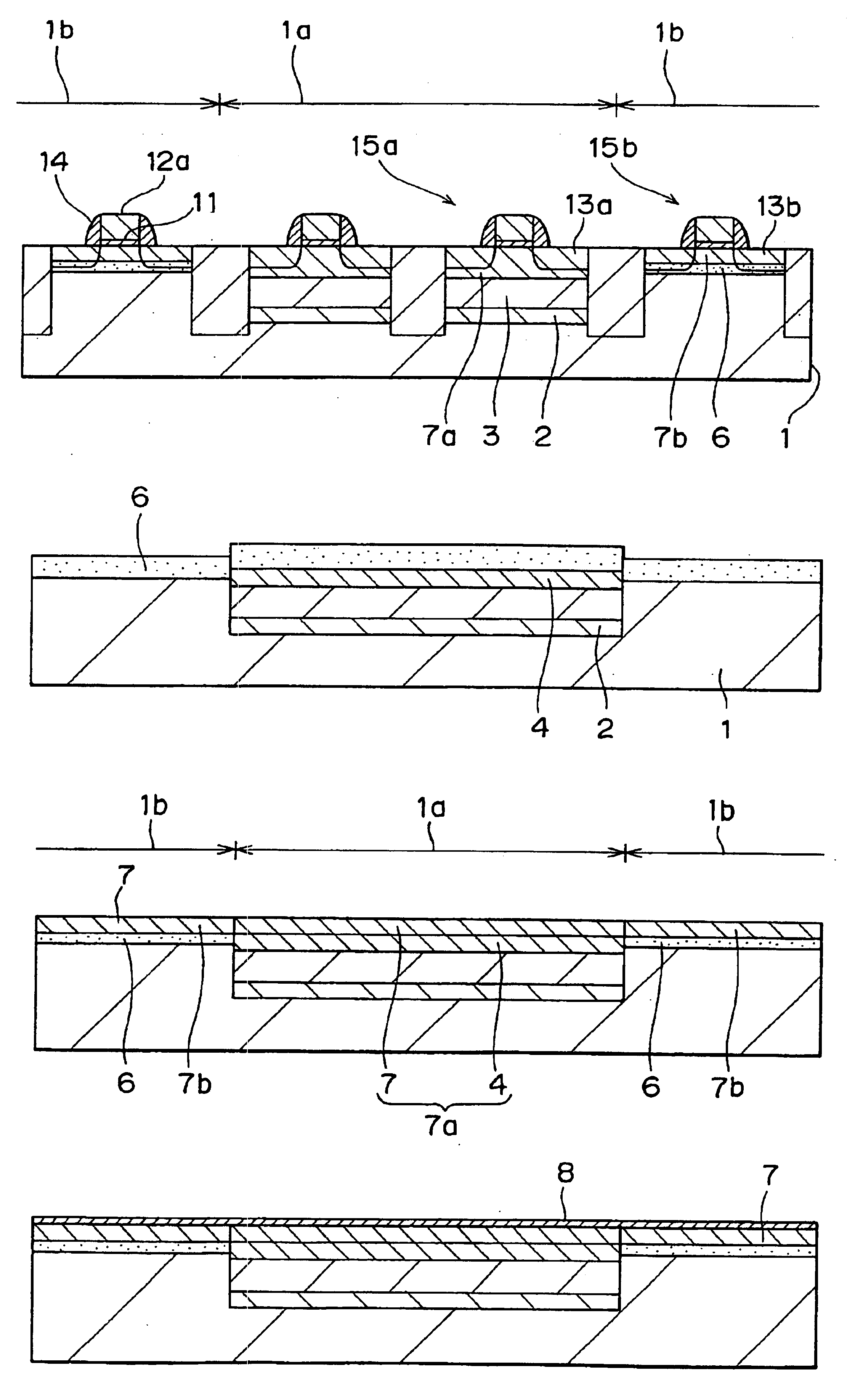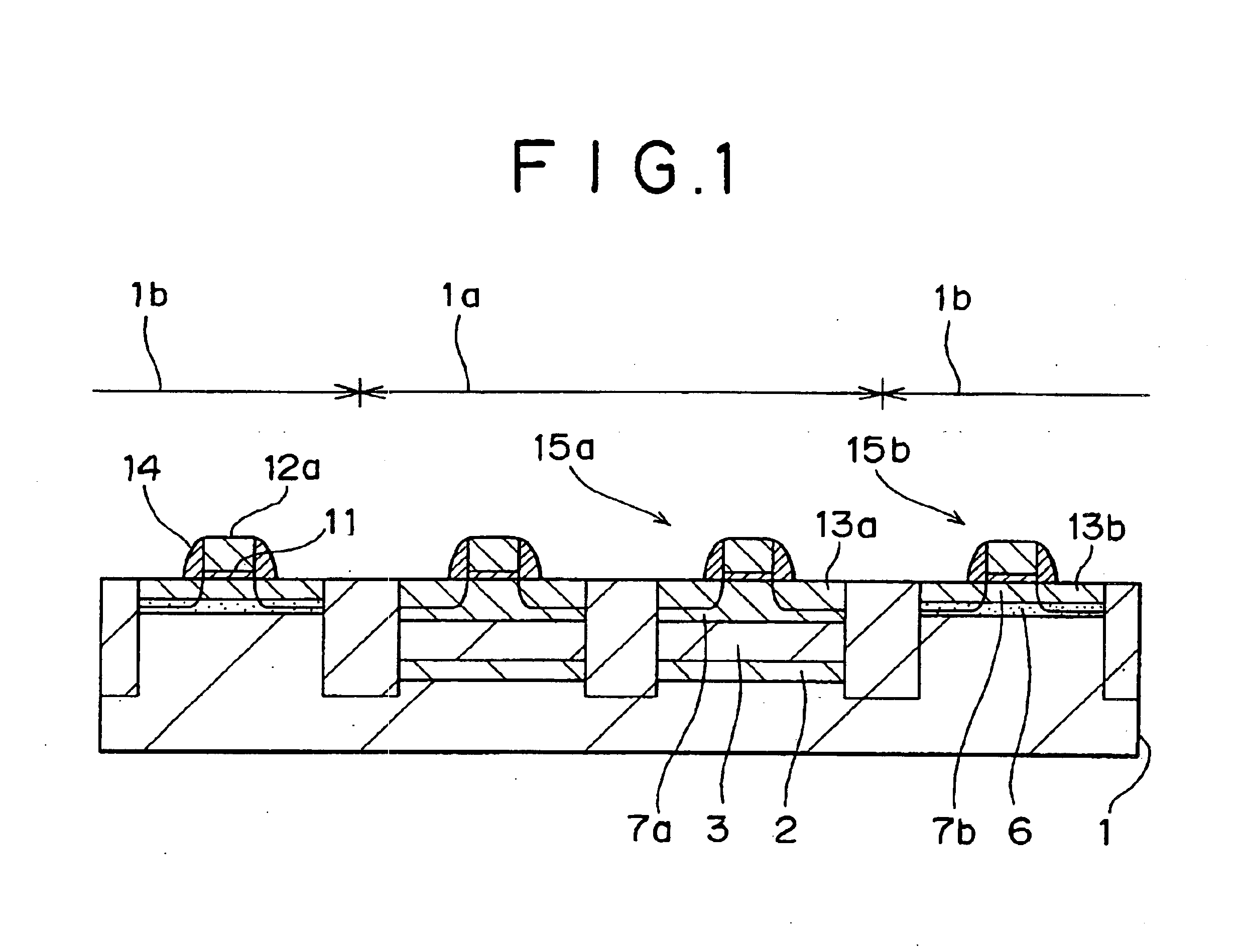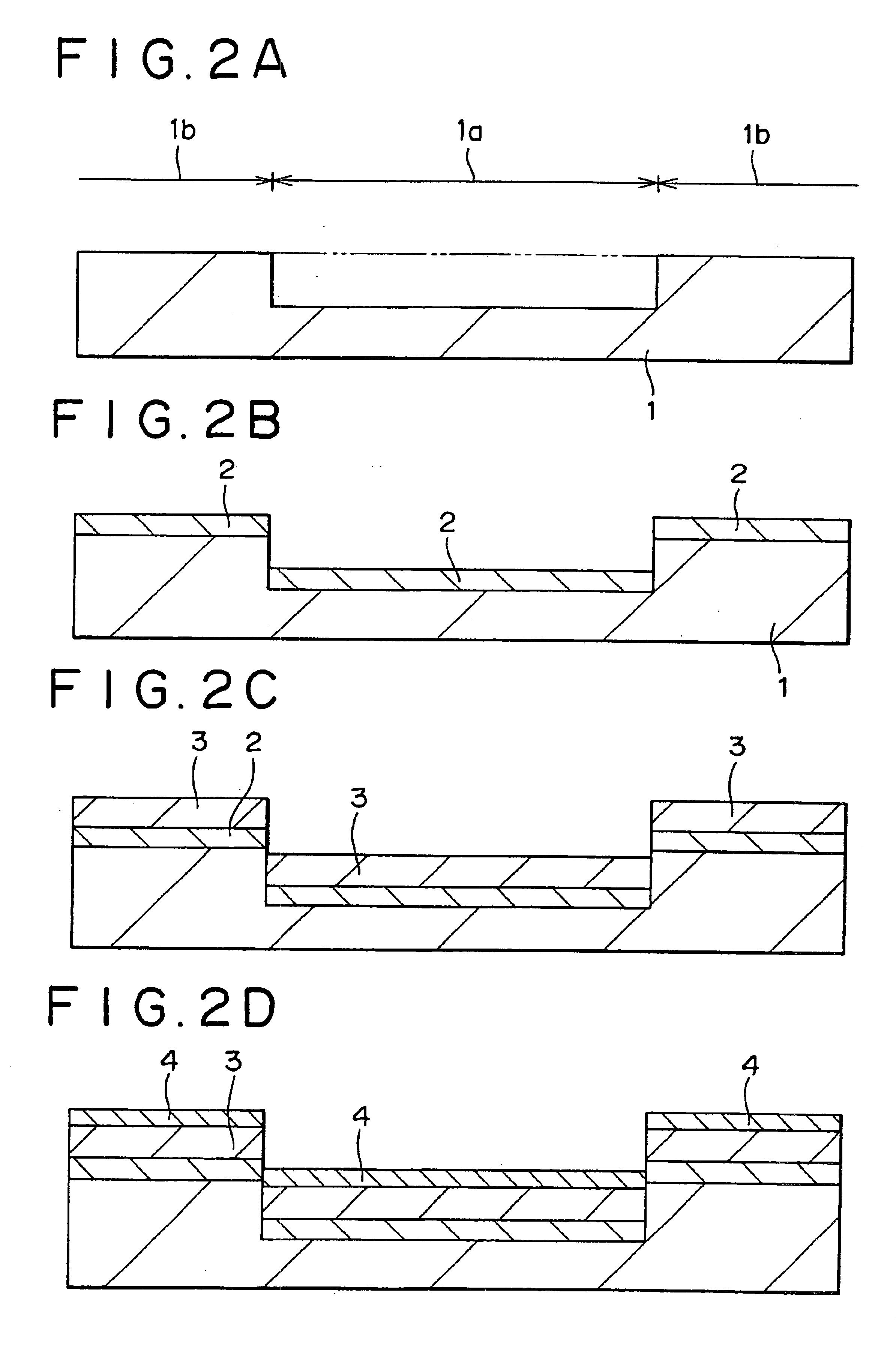Semiconductor and fabrication method thereof
- Summary
- Abstract
- Description
- Claims
- Application Information
AI Technical Summary
Benefits of technology
Problems solved by technology
Method used
Image
Examples
Embodiment Construction
Hereinafter, an embodiment of the present invention will be described with reference to the drawings.
FIG. 1 is a sectional view of a semiconductor device to which the present invention is applied. The semiconductor device has a CMOS configuration in which an n-channel field effect transistor (nMOSTr) 15a and a p-channel field effect transistor (pMOSTr) 15b are provided on a common base-substrate. FIGS. 2A to 6C are sectional views of fragmental structures of the semiconductor device shown in FIG. 1, for illustrating a method of fabricating the semiconductor device.
Referring first to FIG. 2A, a p-type silicon substrate 1 having a diameter of 200 mm, produced by a Czochralski process, is prepared. A resist pattern (not shown) having a thickness of 2.0 μm is formed on the silicon substrate 1 by a lithography process. The resist pattern has an opening portion corresponding to an n-type region 1a on which an nMOSTr is to be formed, and a mask portion corresponding to a p-type region 1b o...
PUM
 Login to View More
Login to View More Abstract
Description
Claims
Application Information
 Login to View More
Login to View More - R&D
- Intellectual Property
- Life Sciences
- Materials
- Tech Scout
- Unparalleled Data Quality
- Higher Quality Content
- 60% Fewer Hallucinations
Browse by: Latest US Patents, China's latest patents, Technical Efficacy Thesaurus, Application Domain, Technology Topic, Popular Technical Reports.
© 2025 PatSnap. All rights reserved.Legal|Privacy policy|Modern Slavery Act Transparency Statement|Sitemap|About US| Contact US: help@patsnap.com



